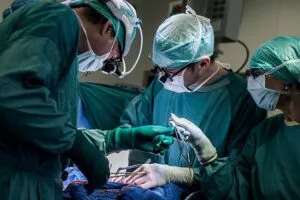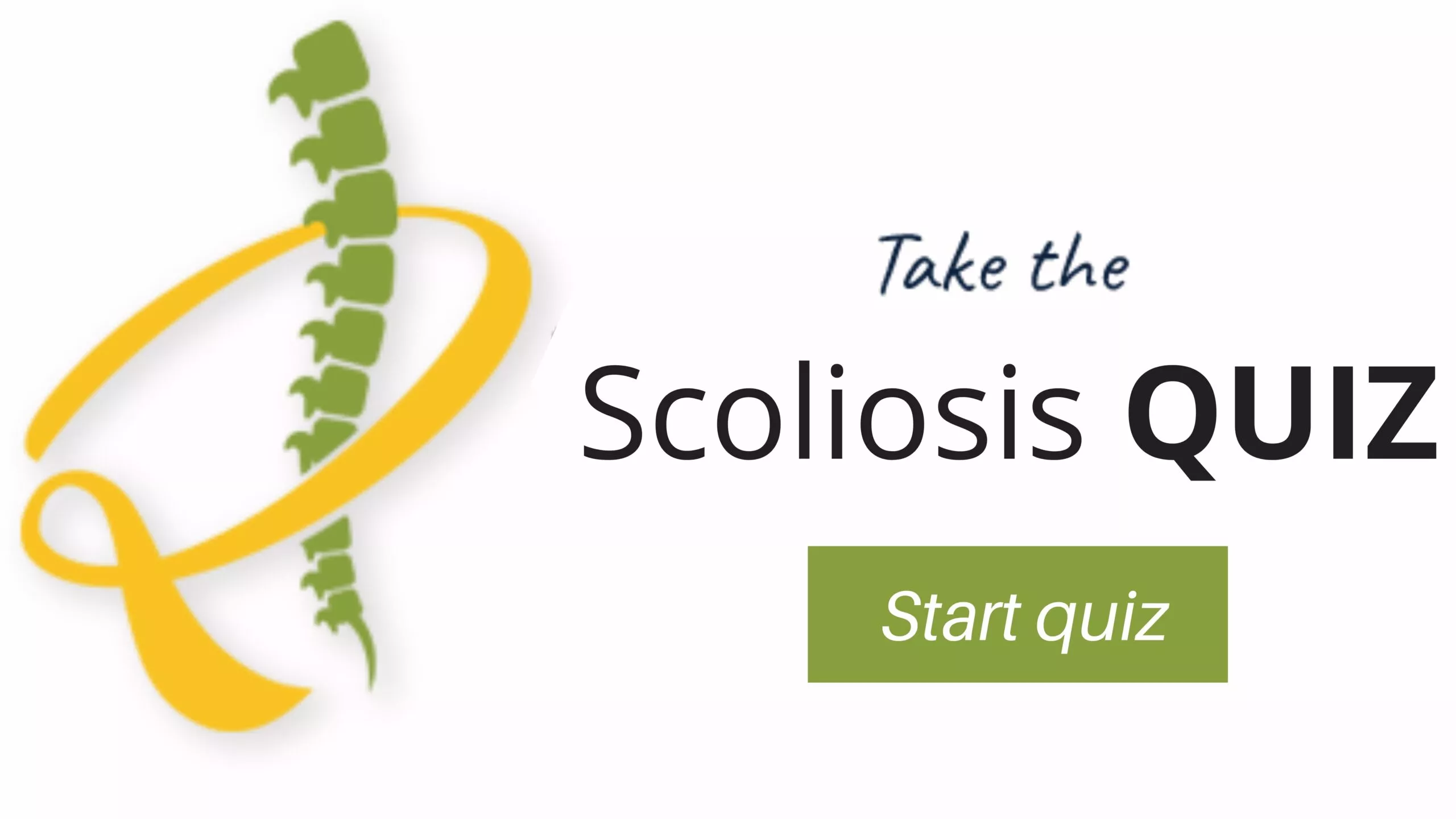3 percent of individuals with progressive curvature may eventually experience severe problems that can include scoliosis and back pain, spinal problems, and nerve compression causing numbness, weakness, and leg pain.
Pedicle Subtraction Osteotomy
Pedicle Subtraction Osteotomy (PSO) is a surgical procedure that removes a wedge-shaped portion of the vertebra to repair kyphotic abnormalities. It appears as a more drastic treatment and entails the removal of a wedge-shaped portion of the vertebral body. In addition, it also removes all of the posterior parts (spinous process, lamina, facet joints, and pedicles). This procedure gets used by surgeons to repair spinal deformities and, particularly, sagittal malalignment with severe kyphosis. The surgeon performs this difficult procedure using a posterior route. Then the surgeon will dislocate the spine in the procedure and add stability with screws and rods.
Who Should Get a Pedicle Subtraction Osteotomy?
Patients with severe kyphotic deformities undergo PSO treatment and tolerate them well. The procedure works well for patients with kyphosis that need significant correction. Especially, if the deformity appears in the lumbar spine or if a previous fusion limits the use of less drastic osteotomy methods. The treated level might receive a significant adjustment of 30–40 degrees thanks to PSO. To correct spinal abnormalities, surgeons utilize this procedure.
Osteotomy literally translates to “to remove bone,” as the term says. In this procedure, one or more bone structures will get removed (or added to) by your doctor during a PSO. Doctors classify PSOs as level 2 deformity repair procedures in the context of spinal osteotomies. A posterior column osteotomy treats less problematic cases. A vertebral column resection treats more severe cases.
Questions and Answers
What is a Pedicle Subtraction Osteotomy?
Pedicle Subtraction Osteotomy is a surgical procedure performed on the spine to correct severe spinal deformities, such as excessive kyphosis or scoliosis. It involves removing a wedge-shaped section of bone from the vertebral body and posterior elements to realign the spine into a more normal position.
Who is a Candidate for a Pedicle Subtraction Osteotomy?
Your content goes here. Edit or remove this text inline or in the module Content settings. You can also style every aspect of this content in the module Design settings and even apply custom CSS to this text in the module Advanced settings.
What is the Recovery Process after a Pedicle subtraction Osteotomy?
The recovery process after Pedicle Subtraction Osteotomy is typically extensive and requires a multidisciplinary approach. Patients may need to stay in the hospital for several days to a week after surgery. Physical therapy and rehabilitation play a crucial role in the recovery process, helping patients regain strength, mobility, and functionality. The recovery time can vary depending on the extent of the surgery and individual healing factors, but it generally takes several months to a year to achieve maximum improvement. Regular follow-up visits with the surgeon are necessary to monitor progress and address any concerns or complications.
Although the Thought of Removing Bone Seems Severe, Here’s Why it Works
A person’s spine always maintains a curve. As an example, your upper back bends slightly forward, and your lower back possesses a small sway (called lordosis) (known as kyphosis). These curves look exactly alike and appear as a perfect mirror image of each other. However, they work as a unit to maintain the alignment of your head and pelvis. The flat back condition might result from losing our natural curve. Kyphosis, or a permanent slump, can develop if we gain too much curvature. Despite being diametrically opposed, these issues refer to sagittal imbalance. Simply put, this describes how we lean either forward (chin-on-chest syndrome) or backward. The PSO corrects this by making a hinge on the spine’s rear side… and then shutting it. Closing the gap results in the lumbar spine’s lower back gaining lordosis and the thoracic spine’s upper back losing kyphosis.
The Procedure for Pedicle Subtraction Osteotomy
 Ankylosing spondylitis sufferers were the target audience for the first description of PSO. The benefit includes the treatment of kyphosis without extending the anterior column (and potentially stretching and injuring vascular structures). Additionally, it eliminates the morbidity linked to the anterior approach. Our surgeons address the spine from the back, and pedicle instrumentation gets applied across the areas required for deformity stabilization and repair. The surgeon removes the spinous process, lamina, and facet joints to expose the designated vertebrae. The indicated vertebra gets exposed and the spinous process, lamina, and facet joints get removed.
Ankylosing spondylitis sufferers were the target audience for the first description of PSO. The benefit includes the treatment of kyphosis without extending the anterior column (and potentially stretching and injuring vascular structures). Additionally, it eliminates the morbidity linked to the anterior approach. Our surgeons address the spine from the back, and pedicle instrumentation gets applied across the areas required for deformity stabilization and repair. The surgeon removes the spinous process, lamina, and facet joints to expose the designated vertebrae. The indicated vertebra gets exposed and the spinous process, lamina, and facet joints get removed.
The upper and lower levels of lamina 1 also get removed to prevent twisting of the neural structures after modification. Next, resect the pedicle at the affected level to the base of the posterior vertebra, preserving the existing nerve root. The surgeon places a temporary rod for stabilization before excising the anterior column. Subperiosteal dissection of the vertebral body takes place and a retractor gets inserted. The amount of bone required for the planned correction gets removed with the appropriate instrument.
The surgeon uses a temporary rod to stabilize the spine during deformity correction, and the surgeon examines the dura mater to ensure that neurological compression does not exist. Neuromonitoring continues to ensure that no new neurological changes occurred. The surgeon completes the procedure by inserting the final instrumentation and completing the bone graft fusion.
When Does Pedicle Subtraction Osteotomy Occur?
A normal spine contains a few moderate curves that, when seen from the side, balance one another and place the body’s center of gravity over the pelvis. Sagittal balance describes this alignment. The causes of Sagittal imbalance can point to conditions that move the body’s center of gravity too far in front of the pelvis and include hyper-kyphosis, ankylosing spondylitis, and flatback syndrome. Pedicle subtraction osteotomy addresses sagittal imbalance. Viewed from behind, a normal spine looks straight.
Scoliosis appears as a side-to-side curve that becomes very apparent from behind. Occasionally, a pedicle subtraction osteotomy might treat a little degree of scoliosis. Doctors can measure the spine’s curve and that will provide these experts with the severity of the curve. For instance, scoliosis, a side-to-side curve, maintains a curve of at least 10 degrees. Average spine kyphosis ranges from 20 to 40 degrees; a kyphosis of 70 degrees or more may require surgery.
PSO provides approximately 30 degrees of compensation. It works well for acute kyphosis, some cases of flat back syndrome, and some cases of ankylosing spondylitis. Most frequently, our doctors find that the lumbar region or lower spine contains the problem. Compared to other deformity correction surgeries, PSO removes a moderate amount of bone and allows for moderate realignment. It eliminates the pedicles that connect the back of the target vertebra to its front, the laminae, the facet joints at the back of the target vertebra, and the vertebrae above and below, as well as a section of the target vertebral body.
Pedicle Subtraction Procedure Performed
A pedicle removal osteotomy occurs when the patient goes under general anesthesia. Spinal cord monitoring techniques and Motor Evoked Potentials measure nerve electrical activity and help ensure spinal safety during surgery. Once the patient becomes unconscious, they get placed face down on a special folding operating table. Following a central back incision, the bones of the spinal column become visible. Following that, the surgeon inserts screws into the vertebrae above and below the targeted region.
Screws get placed in the pedicles, the thick columns of bone that join the back and front of the vertebra, giving them the name “pedicle screws.” The rods will keep the spine in place while it heals. Next, the surgeon removes a protrusion called an appendage from behind the target vertebra. The surgeon hollows out the space under the pedicle of the target vertebra and removes the pedicle. The surgeon then widens the space and creates a wedge-shaped cavity in the vertebrae.
Once completed, the wedge-shaped top and bottom get placed together. This closes the wedge and corrects the deformity by about 30 degrees. The surgeon gradually unfolds the specialized operating table from an inverted “V” shape to a flatter position until the bone surfaces touch and the wedge closes. To keep the spine in place while it heals, rods get inserted into the pedicle screws. The upper and lower wedge’s bone surfaces will fuse into one solid bone as they develop together, giving the vertebra long-lasting strength and stability.
How Should I Prepare for this Procedure?
It’s crucial to cease using tobacco products before any deformity repair operation. The effects of nicotine on bone fusion and surgical results remain quite negative. Speak to your neurosurgeon if you use cigarettes or smoke now about stopping. Patients or parents of patients should make sure they learn the intended outcomes of the operation, the potential dangers, and what to anticipate from the healing process. Speak with the surgeon treating you or your child if questions arise concerning the treatment or the healing process. You should write down any questions you or your child want answered and then bring the list with you to your visits.
Tell your doctor about any drugs or dietary supplements you or the patient take, especially those that might thin your blood, such as aspirin. Before your surgery, your doctor may advise you or the patient to cease taking certain drugs. Before the procedure, list all drugs you take to make it simpler. If you or the patient possess a latex, food, or medicine allergy, please let your doctor know (some surgical gloves contain latex). Remove any nail paint or acrylic nails the day before surgery, skip makeup, and take off all jewelry. Bring any necessary materials, including a toothbrush, toothpaste, and dentures. Upon registration, the hospital employee will place an ID bracelet on your wrist that will contain your name, birthday, and the name of the surgeon.
Pedicle Subtraction Osteotomy’s Benefits and Drawbacks
Although doctors consider pedicle subtraction osteotomy as a difficult spinal reconstruction with risks, it offers beneficial treatment for severe kyphosis. For example, infection, neurologic damage, dura rupture, instrumentation failure, non-union, chronic pain, DVT, PE, chronic discomfort, and the potential for revision surgery outline a few of these. Although every patient appears differently, the only way to fully understand the risks and advantages of having this surgery occurs when the doctor and patient address each condition and conduct a thorough assessment. All of our doctors at the Southwest Scoliosis and Spine Institute maintain advanced fellowships and possess the knowledge skills and abilities of experts when it comes to spine health.
Why Come to the Southwest Scoliosis and Spine Institute?
The Southwest Scoliosis and Spine Institute specializes in comprehensive care for adults, children, and adolescents with Spine Conditions. There are several reasons why patients with spine problems should consider coming to this center:
- Expertise: The team includes specialists with extensive experience in treating Spine conditions.
- Multidisciplinary approach: The team of specialists works together to provide a comprehensive treatment plan that addresses all aspects of the patient’s condition.
- They work closely with other specialists such as radiologists, physical therapists, and rehabilitation specialists to ensure that the patient receives the best possible care.
- Experience with adults, children, and adolescents: The surgeons treat children and adolescents and are aware of their growth plates.
- Experience in the latest surgical techniques: The doctors maintain up-to-date training with the latest surgical techniques for treating spine conditions and using minimally invasive surgical procedures, which can lead to faster recovery times and less pain for the patient.
- Follow-up care: The center provides follow-up care to ensure that the patient continues to recover as quickly as possible.
Conclusion
Overall, the Southwest Scoliosis and Spine Institute, with offices in Dallas, Plano, and Frisco, Texas, offers comprehensive care for adults and children with spine conditions. We provide the expertise, knowledge, skills, and abilities that can provide a positive outcome for patients with spinal medical conditions. As spine experts, we invite you to make an appointment with us to treat your spinal condition. We have appointments within 24 hours.
____________________
We’re here to help STOP THE PAIN
If you or your child suffer from scoliosis and need a doctor who specializes in orthopedic surgery,
call the Southwest Scoliosis and Spine Institute at 214-556-0555 to make an appointment today.


